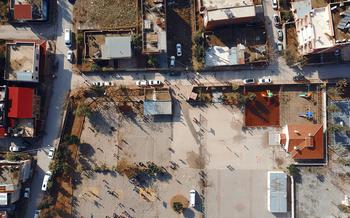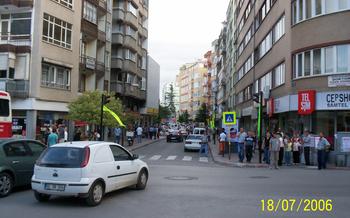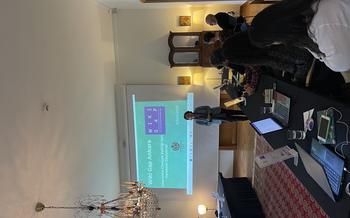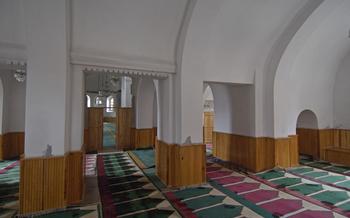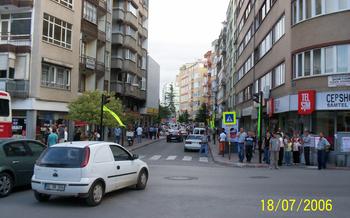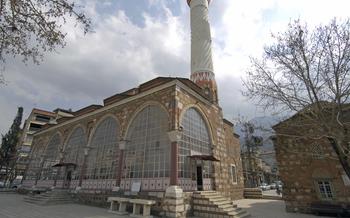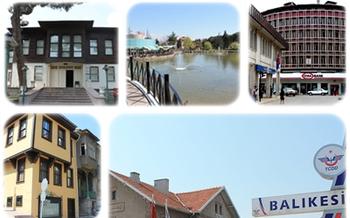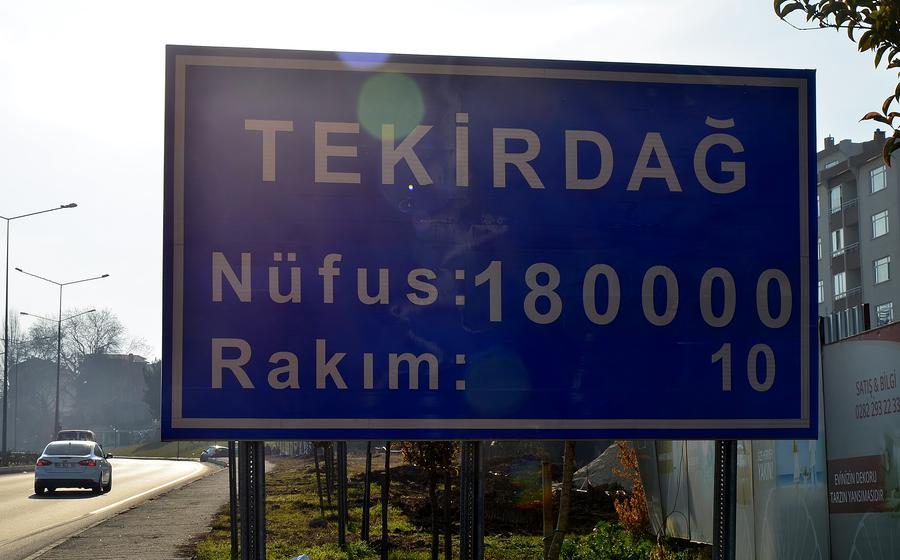
Tekirdağ Grand Mosque
- History and Significance
- Architectural Details
- Interior Beauty
- Religious Significance
- Cultural Importance
- Visiting Hours and Dress Code
- Prayer Facilities and Ablution Area
- Historical Artifacts and Exhibits
- Guided Tours
- Local Traditions and Customs
- Nearby Attractions
- Photography and Videography
- Accessibility for Visitors with Disabilities
- Local Cuisine and Dining Options
- Insider Tip: Unveiling the Hidden Gem of Tekirdağ
History and Significance
The Tekirdağ Grand Mosque stands as a testament to the rich history and cultural heritage of Tekirdağ, Turkey. Constructed in the 16th century during the reign of Sultan Suleiman the Magnificent, this majestic edifice has served as a spiritual and cultural beacon for the city's Muslim community for over 400 years. Built in the classical Ottoman architectural style, the mosque showcases intricate tilework, elegant domes, and soaring minarets, blending harmoniously with the surrounding cityscape. Beyond its religious significance, the Tekirdağ Grand Mosque has played a pivotal role as a social and cultural center, fostering a sense of community and preserving Islamic traditions amidst a diverse urban landscape.
Architectural Details
The architectural design of the Tekirdağ Grand Mosque showcases a harmonious blend of Ottoman and Seljuk styles. Its most striking feature is its majestic dome, which rises high above the city skyline. The dome is supported by four slender minarets, each adorned with intricate carvings and inscriptions. The exterior walls of the mosque are embellished with intricate tilework, featuring geometric patterns and floral motifs in vibrant colors. The main entrance to the mosque is framed by a grand arch, which leads into a spacious courtyard. The courtyard is surrounded by arched colonnades, providing shelter and a serene ambiance for visitors.
Interior Beauty
Upon entering the Tekirdağ Grand Mosque, visitors are greeted by a spacious and awe-inspiring prayer hall. The sheer size of the hall, with its rows of intricately woven carpets, creates a sense of tranquility and devotion. The walls and ceiling are adorned with intricate artwork, calligraphy, and ornamental details, each symbolizing a different aspect of Islamic faith and tradition.
The artwork in the mosque is particularly captivating. The walls are decorated with beautiful verses from the Quran, rendered in elegant Arabic calligraphy. These verses, which praise the glory of Allah and the teachings of the Prophet Muhammad, serve as a reminder of the mosque's spiritual significance. The ceiling, meanwhile, is adorned with intricate geometric patterns and designs, creating a mesmerizing kaleidoscope effect. These patterns are not merely decorative, but also hold symbolic meaning, representing the interconnectedness of all things in the universe.
The overall effect of the interior decoration is one of harmony, balance, and reverence. Every element, from the carpets to the calligraphy, contributes to creating an atmosphere conducive to prayer and contemplation. The mosque's interior is a testament to the skill and artistry of the craftsmen who built it, and it remains a source of inspiration for visitors from all over the world.
Religious Significance
The Tekirdağ Grand Mosque stands as a beacon of Islamic faith and devotion in the heart of the city. It serves as a central place of worship for Muslims in Tekirdağ, providing a sacred space for them to fulfill their religious obligations. The mosque plays a crucial role in promoting Islamic teachings, fostering a sense of community among believers, and strengthening the bonds of brotherhood and sisterhood within the Muslim community.
Throughout the year, the mosque hosts a variety of religious events and activities that bring the community together. During the holy month of Ramadan, the mosque transforms into a vibrant hub of spiritual activity, with special prayers, Quran recitations, and communal iftars (fast-breaking meals) taking place. The mosque also organizes educational programs, workshops, and lectures to deepen the understanding of Islamic principles and practices among its congregation.
One of the highlights of the mosque's religious calendar is the annual Mevlid-i Nebi celebration, which commemorates the birth of Prophet Muhammad (PBUH). During this joyous occasion, the mosque is decorated with colorful lights and banners, and special prayers and recitations are held to honor the Prophet's life and teachings.
Cultural Importance
The Tekirdağ Grand Mosque stands as a symbol of Islamic heritage and cultural significance in the city. Beyond its religious function, it serves as a gathering place for social and cultural events, fostering a sense of community and belonging among the local population. The mosque regularly hosts religious classes, lectures, and exhibitions, providing a platform for education, discussion, and exchange of ideas. These events not only deepen the understanding of Islamic teachings but also promote cultural exchange and foster a spirit of unity and togetherness.
The mosque's spacious courtyard and prayer hall often transform into vibrant venues for community gatherings and celebrations. During religious festivals like Eid al-Fitr and Eid al-Adha, the mosque becomes the heart of communal festivities, where Muslims come together to share meals, exchange greetings, and celebrate the spirit of the occasion. These events showcase the mosque's role in preserving and promoting Turkish Islamic heritage, while also providing a sense of belonging and shared identity among the faithful.
Visiting Hours and Dress Code
The Tekirdağ Grand Mosque is open to visitors throughout the week, except during prayer times, which typically occur five times a day. To ensure a peaceful and respectful environment, visitors are kindly requested to avoid visiting during these prayer times. The exact prayer times may vary slightly depending on the season and location, so it's advisable to inquire locally or check online for specific timings.
When visiting the mosque, it is imperative to observe the appropriate dress code as a sign of respect for Islamic customs. For women, it is customary to cover their heads with a headscarf or shawl, and to wear loose and modest clothing that covers their shoulders and knees. Men are expected to dress modestly as well, avoiding shorts or tank tops. Please note that visitors who are not properly dressed may be politely asked to cover up before entering the mosque.
Prayer Facilities and Ablution Area
The Tekirdağ Grand Mosque offers spacious and well-maintained prayer facilities for both men and women, ensuring a comfortable and conducive environment for worship. The separate sections for men and women allow for privacy and adherence to Islamic customs.
Before entering the prayer hall, visitors are encouraged to perform ablution (wudu) to purify themselves ritually. The mosque provides a designated ablution area with separate facilities for men and women. The area is equipped with taps, basins, and soap dispensers, allowing visitors to perform wudu conveniently.
To perform wudu correctly, visitors should follow these steps:
Intention: Declare the intention to perform wudu.
Washing Hands: Wash both hands up to the wrists three times.
Rinsing Mouth: Rinse the mouth three times, ensuring the water reaches all parts.
Sniffing Water: Gently sniff water into the nostrils three times and blow it out.
Washing Face: Wash the entire face three times, from the hairline to the chin and from ear to ear.
Washing Arms: Wash both arms up to the elbows three times, starting with the right arm.
Wiping Head: Wipe the head once with wet hands, from the forehead to the nape of the neck.
Washing Feet: Wash both feet up to the ankles three times, starting with the right foot.
After completing wudu, visitors can proceed to the prayer hall to offer their prayers.
Historical Artifacts and Exhibits
The Tekirdağ Grand Mosque houses several historical artifacts and exhibits that shed light on its rich history and cultural significance. Within the mosque's premises, visitors can find a collection of antique manuscripts, calligraphic works, and religious texts that showcase the artistry and devotion of past generations. These artifacts provide a tangible connection to the mosque's origins and the Islamic heritage of the region.
In an adjacent museum, visitors can explore a range of exhibits that delve deeper into the mosque's history and its role in the community. Through interactive displays, multimedia presentations, and guided tours, visitors can learn about the mosque's construction, its architectural features, and the daily life of the worshippers who have frequented its halls for centuries.
These exhibits offer a fascinating glimpse into the past, allowing visitors to gain a deeper understanding of the Tekirdağ Grand Mosque's significance as a religious, cultural, and historical landmark. Whether you're a history buff, a lover of Islamic art, or simply curious about the region's heritage, these exhibits are sure to captivate and inspire.
Guided Tours
For those seeking a deeper understanding of the mosque's history, architecture, and significance, guided tours are highly recommended. Knowledgeable guides provide insightful commentary, revealing the hidden stories and symbolism behind the mosque's design and decorations. Visitors can learn about the construction techniques, the mosque's role in the community, and the cultural traditions associated with it.
Guided tours typically cover various aspects of the mosque, including its architectural features, interior artwork, religious significance, and historical context. They offer a unique opportunity to ask questions and gain a more comprehensive understanding of the mosque's importance. Visitors can also request specific areas of interest to be covered during the tour.
To book a guided tour, visitors can contact the mosque's administration or inquire at the information desk. Reservations may be required, especially for groups or during peak tourist seasons. Guided tours are often available in multiple languages, catering to international visitors.
By participating in a guided tour, visitors can enhance their experience of the Tekirdağ Grand Mosque and gain a deeper appreciation for its historical, cultural, and religious significance.
Local Traditions and Customs
The Tekirdağ Grand Mosque is deeply intertwined with local traditions and customs that reflect the rich Islamic heritage of the region. One notable tradition is the practice of removing shoes before entering the mosque as a sign of respect and cleanliness. Visitors are expected to follow this custom and place their shoes in the designated racks or shelves provided near the entrance.
Another important custom is the greeting of fellow worshippers with the traditional Islamic salutation of "As-salamu alaykum" (peace be upon you) upon entering the mosque. This greeting is a way to show respect and acknowledge the shared bond of faith among Muslims. Visitors are encouraged to greet others in this manner as a sign of respect and friendliness.
During prayer times, worshippers form neat rows facing the qibla (direction of Mecca) and stand shoulder to shoulder, symbolizing unity and equality before God. Visitors are expected to join in this formation and follow the lead of the imam (prayer leader) in performing the various movements and recitations during the prayer.
It is customary for women to cover their heads and wear modest clothing when visiting the mosque, as a sign of respect for Islamic norms and values. Visitors should dress appropriately and avoid wearing revealing or tight-fitting clothing.
By observing these local traditions and customs, visitors can demonstrate their respect for the Islamic faith and contribute to a harmonious and welcoming atmosphere within the Tekirdağ Grand Mosque.
Nearby Attractions
Complementing your visit to the Tekirdağ Grand Mosque, Tekirdağ offers a wealth of other captivating attractions that unveil the city's rich history, natural beauty, and cultural heritage. Embark on a journey of discovery as you explore these nearby gems.
-
Tekirdağ Museum: Delve into the region's past at the Tekirdağ Museum, showcasing an array of historical artifacts, archaeological treasures, and ethnographic exhibits that narrate the city's evolution from ancient times to the present day.
-
Süleymanpaşa Fortress: Witness the grandeur of the Süleymanpaşa Fortress, a formidable structure that once served as a strategic military stronghold. Explore its imposing walls, towers, and dungeons, and soak in the breathtaking panoramic views of the city and the Sea of Marmara.
-
Tekirdağ Marina: Take a leisurely stroll along the picturesque Tekirdağ Marina, where you can admire the gleaming yachts and sailboats bobbing in the turquoise waters. Indulge in a delightful meal at one of the charming waterfront restaurants, savoring fresh seafood delicacies while enjoying the tranquil ambiance.
-
Rumeli Feneri Lighthouse: Discover the iconic Rumeli Feneri Lighthouse, a beacon of hope for seafarers since 185Climb to the top of this historic lighthouse and be rewarded with mesmerizing views of the Black Sea and the Bosphorus Strait.
-
Çamlık Nature Park: Escape to the serene Çamlık Nature Park, a verdant oasis just a short drive from the city center. Wander through its lush pine forests, admire the vibrant wildflowers, and spot diverse bird species in their natural habitat.
Plan a day or two to explore these nearby attractions, immersing yourself in the captivating tapestry of Tekirdağ's cultural and natural wonders. Each destination promises a unique experience, enriching your understanding of this vibrant city.
Photography and Videography
Photography and videography are allowed within the Tekirdağ Grand Mosque with certain restrictions and guidelines in place to ensure respect for the sanctity of the religious site. Visitors are kindly requested to refrain from taking photos or videos during prayer times or in areas designated for private worship. Using flash photography or tripods is also discouraged to avoid disturbing other visitors or disrupting the serene atmosphere of the mosque. It is important to be mindful of the privacy of other individuals and avoid capturing images that may be considered intrusive or disrespectful. Visitors are encouraged to seek permission from the mosque authorities or staff if they wish to take photographs or videos for specific purposes, such as educational or journalistic projects. By adhering to these guidelines, visitors can contribute to preserving the sacredness of the mosque while capturing meaningful memories of their visit.
Accessibility for Visitors with Disabilities
The Tekirdağ Grand Mosque is committed to providing an inclusive and accessible environment for all visitors, regardless of their physical abilities. The mosque features a number of accessibility features to ensure that visitors with disabilities can participate fully in all aspects of the worship experience.
Wheelchair ramps and elevators are available at all entrances to the mosque, making it easy for visitors to navigate the building. Once inside, designated areas are reserved for wheelchair users in both the prayer hall and the courtyard, ensuring that they have a clear view of the proceedings.
In addition, the mosque provides a number of services to assist visitors with disabilities. Trained volunteers are available to offer guidance and assistance, and wheelchairs can be borrowed for use within the mosque. Upon request, the mosque can also arrange for sign language interpreters to be present during religious services and events.
With its commitment to accessibility, the Tekirdağ Grand Mosque welcomes visitors of all abilities to come and experience the beauty and spirituality of this sacred space.
Local Cuisine and Dining Options
After a fulfilling visit to the Tekirdağ Grand Mosque, take the opportunity to savor the delectable flavors of Turkish cuisine at nearby restaurants. Indulge in traditional dishes that showcase the region's rich culinary heritage, blending fresh ingredients, aromatic spices, and centuries-old recipes.
Within a short walk from the mosque, discover an array of eateries that cater to every taste and budget. For a casual and authentic experience, try the local pide (Turkish pizza), known for its crispy crust and flavorful toppings. Alternatively, treat yourself to a delectable kebab, grilled to perfection and served with mouthwatering accompaniments.
For those seeking a more formal dining experience, Tekirdağ offers a selection of fine-dining restaurants that showcase modern interpretations of traditional Turkish cuisine. Delight in innovative dishes that blend local ingredients with international influences, creating a culinary symphony that will tantalize your taste buds.
No matter your preference, make sure to sample some of the local specialties, such as Tekirdağ köfte (meatballs) or the famous Tekirdağ şarapları (wines). These culinary delights are not only delicious but also deeply rooted in the region's cultural identity.
Savor the flavors of Turkey as you dine amidst the vibrant atmosphere of Tekirdağ, where the aromas of grilled meats, fresh salads, and tantalizing desserts fill the air. Embrace the opportunity to immerse yourself in the local food culture and create lasting memories that will linger long after your visit.
Insider Tip: Unveiling the Hidden Gem of Tekirdağ
During my visit to the Tekirdağ Grand Mosque, I stumbled upon a hidden gem that few visitors know about. Tucked away in a quiet corner of the mosque, I discovered a small library filled with ancient Islamic texts and manuscripts. The collection was truly awe-inspiring, and I spent hours poring over the delicate pages, marveling at the intricate calligraphy and the profound wisdom contained within. If you're a history buff or simply appreciate rare and beautiful objects, be sure to seek out this hidden treasure during your visit to the mosque.
